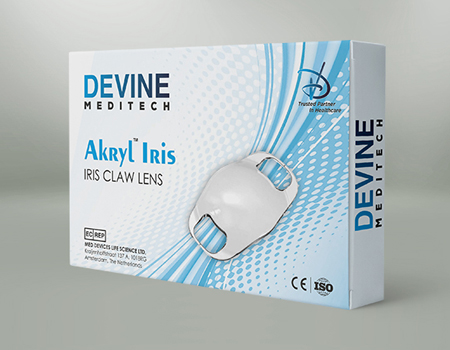
The UV-absorbing Iris Claw IOL, made by Devine Meditech, is an ocular implant that is used to replace a patient's natural crystalline lens and enhance vision. The Iris Claw IOL is a one-piece IOL made up of two parts: the viewing zone is located in the clear optic core, and the outside haptic helps in lens fixation.
You may stop searching if you're seeking intraocular lens makers in India because Devine Meditech is the ideal location for you. It is among the most skilled locations in India for producing and distributing intraocular lenses, and it provides a large selection of goods to satisfy patients' various needs.
The study demonstrates that the anterior part of the iris-claw lens supply produces the greatest results when a proper posterior capsular support is missing. Many patients who had complicated cataract surgery involving posterior capsule damage were included in the study. The additional implantation occurs after the pars plana vitrectomy with luxated IOL removal, and the subsequent implantation in aphakia following piercing keratoplasty.
The most common complications following cataract surgery are aphakia and injury to the lens capsule; nonetheless, the intraocular lens after cataract surgery is beneficial for the vitreous chamber. The problem affects about 1-3% of cataract treatments; the most prevalent types of cataracts impacted are mature traumatic, dislocation, and pseudo-peeling cataracts.
The anterior chamber lens and the draining angle are related. Obsessed with or without concealing the intraocular lens or beyond the iris lenses is also mentioned. When a posterior capsule injury occurs, a black hammer intraocular lens is used.
The polymethyl methacrylate used for iris claw lens insertion is non-collapsible and has two diameters: 5.4 mm for the optical element and 8.5 mm for the sensory part. Lens haptics can be safely coupled to the iris at the traversal point and the lens's endothelium.
Compared to frontal lenses, this design reduces the risk of endothelial cell damage and the development of recurring glaucoma. At Devine Meditech, It also simplifies and shortens the operation compared to attaching the lens to the sclera.